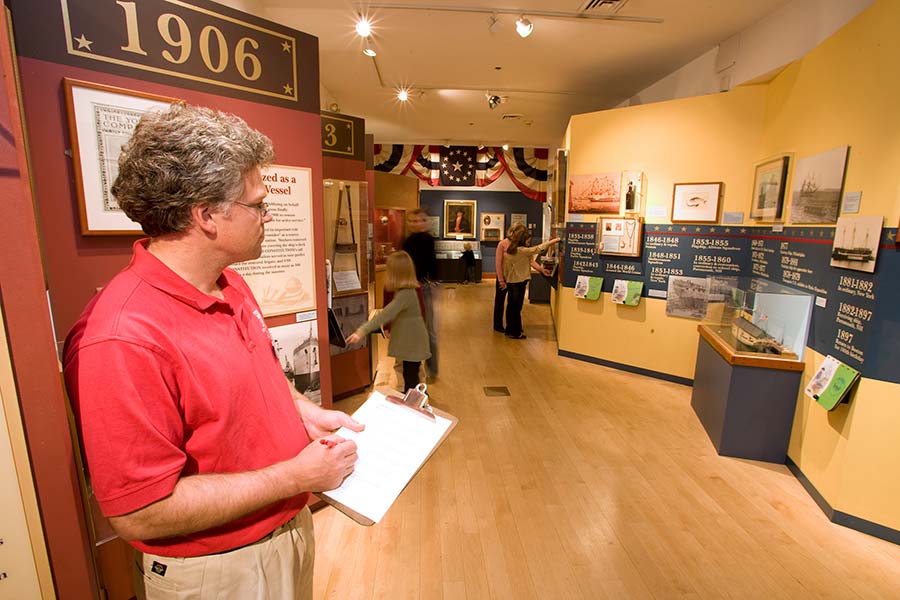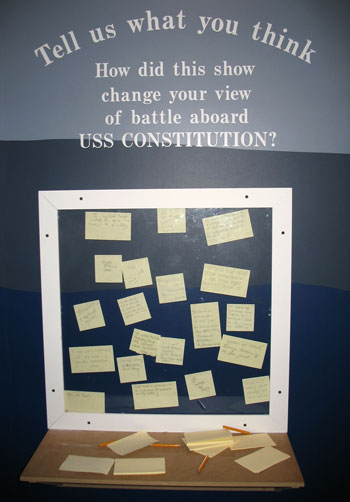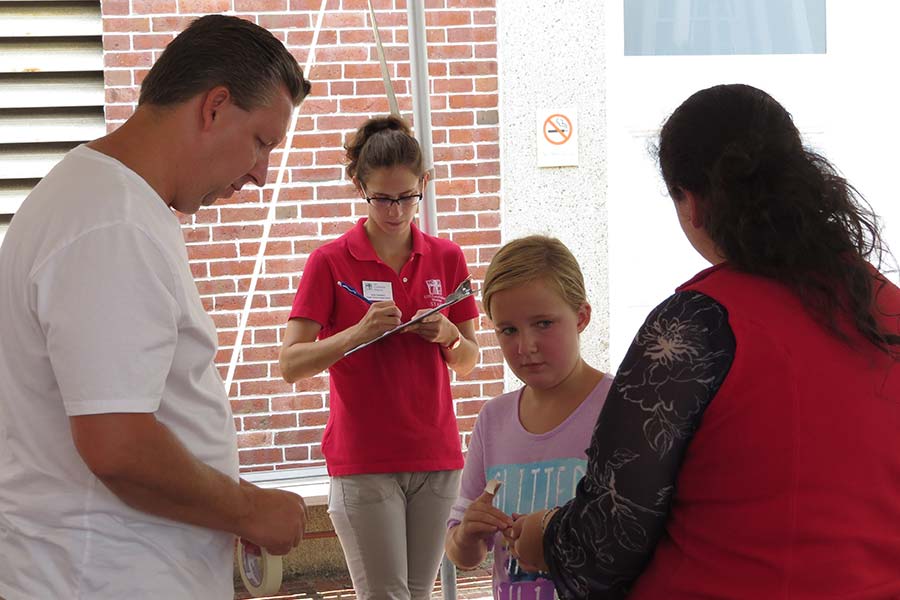Why it is Important
Summative evaluation allows you to measure how well you met your project goals and to understand how families interpreted themes and interacted with an exhibit or program. It reveals problems and answers questions that were not (or could not) be answered during the earlier stages of development and evaluation:
- Do families know which way you intend them to go?
- Can they understand instructions and key text panels?
- Do both adults and children understand the major themes?
- How much time does the average family spend in the exhibit or program?
- Is this a social experience? Are family members having conversations? Are they collaborating or working as a team?
- Are adults and children actively engaging with one another?
- Is everyone having fun together?
Put it into Practice
At the end of an exhibit or program design process, summative evaluation tells you how visitor behavior, knowledge, and interactions have changed after participating. Summative evaluation includes timing, tracking, and observation studies and post-visit surveys or phone calls. Certain quantitative information (for instance, how long a visitor spends at a particular interactive) can be recorded objectively by a staff member or volunteer with a stopwatch, pencil, and a floorplan of the exhibit. However, in observing visitors, it’s also crucial to record qualitative data like notable quotes from your visitors and their interactions with the exhibit and each other.
Observation
Observation is the careful, intent watching of an audience or experience in order to discern trends in usage, enjoyment, feasibility, products, and other goals. To conduct the study, find a location where you can observe families entering your exhibition or participating in your program. Some institutions put out a sign to inform visitors that observations are being conducted. Evaluation staff should be identifiable by your visitors, either in uniform or with a name badge.

If you have multiple people conducting observations, use a printed tool with criteria and the evaluative goals. Make sure everyone is on the same page and looking for the same things by meeting ahead of time and enumerating goals and techniques in writing.
Program Observation Form
After developing new family programs for the Bicentennial of the War of 1812, USS Constitution Museum staff used this form to focus on observing the types of engagement prevalent during the program.
Program Evaluation FormConversation
When it comes to measuring the success of a family-friendly project, talking to families is just as important as observing them. Complimentary surveys and comment boards are two effective methods of using conversation and prompts to evaluate an experience.
Survey and Beyond
Surveys and written questionnaires are frequently used to evaluate visitor experience. But it is valuable to think outside the box and take time to create an evaluation that compliments the experience. In the article, Evaluation Can Be Fun, Marianna Adams reflects on some of the problems with traditional evaluation and suggests more imaginative options. She encourages museum professionals to think creatively about how to get the data the museum wants and have it match the spirit of the experience.
Evaluation can seem like an imposition with a boring, complicated survey. But make your evaluation into a fun, interesting conversation and you’ll have the audience hooked. Marianna Adams explains:
Comment Boards
While some families love to share their thoughts and honest opinions about an exhibit or program – the good and the bad –with you, others may feel uncomfortable. Comment boards provide families the opportunity to respond to the experience with some anonymity. A comment board can help you determine if key thematic messages come through and evaluate the impact of the experience.

You don’t need special materials to start a comment board or poster. Get creative with materials you already have and that families feel comfortable using, like large sheets of paper, foam-core boards, adhesive notepads, stickers, washable markers, golf pencils, and whiteboards.

Asking the Right Questions
Asking visitors “Did you have fun?” tends to yield high marks, but not necessarily critiques you can improve upon. And “What could we do better?” is often answered with “nothing.” Marianna Adams addresses how to ask the right questions to get useful data in this video:
Summative Evaluation Form
This form was designed by the USS Constitution Museum staff in collaboration with Engage Families Project Evaluator, Marianna Adams. It allowed us to capture summative data on families’ reactions to redesigned programs through a combination of observation and conversation. On the back, observers recorded successful and unsuccessful engagements they found, along with ideas for improvement. After observing the family, the observers surveyed the family. This allowed project staff to compare the observations to the families’ perceptions. The instrument showed us how successful the programs had become at engaging all ages of a multigenerational group.
Family Program Evaluation Form
